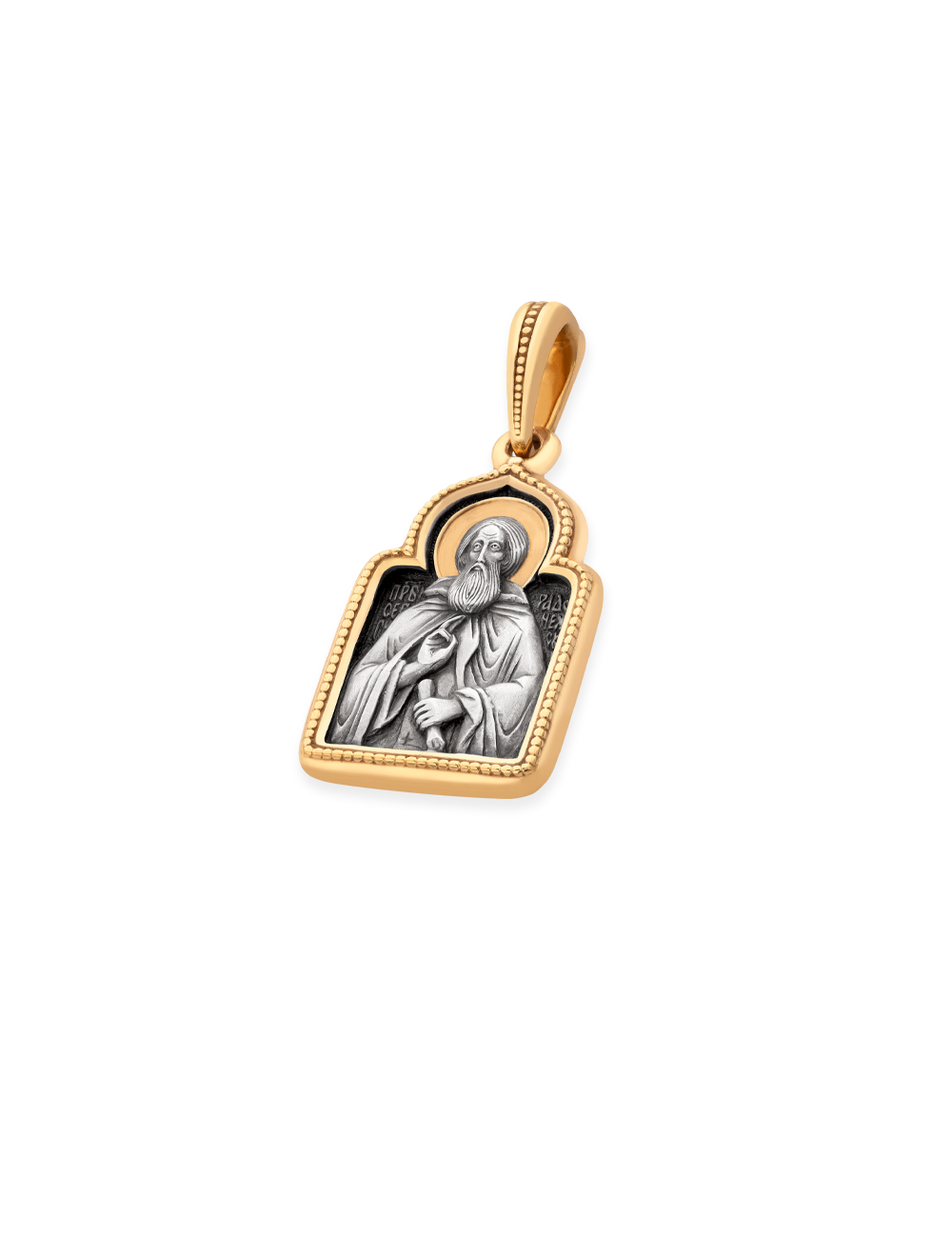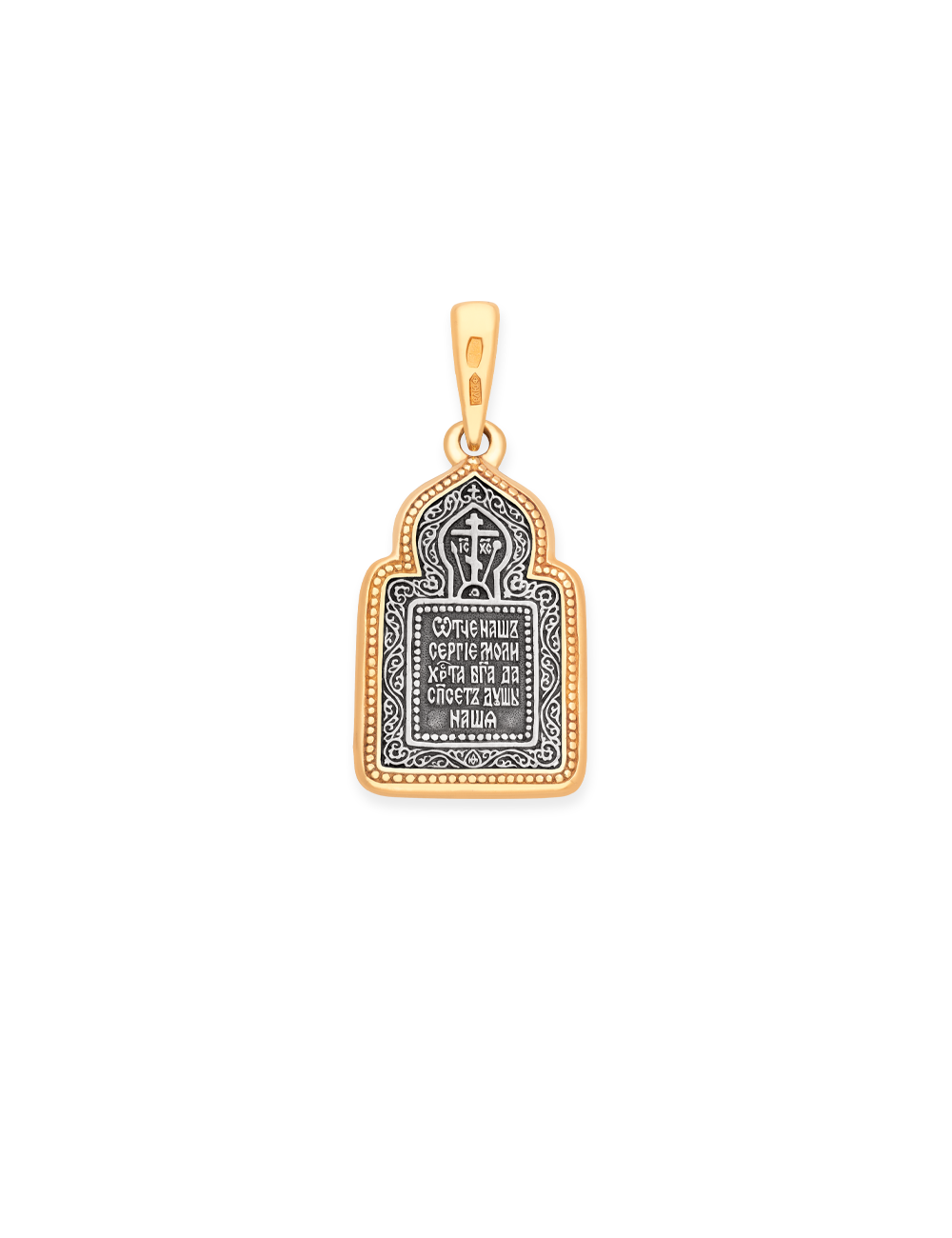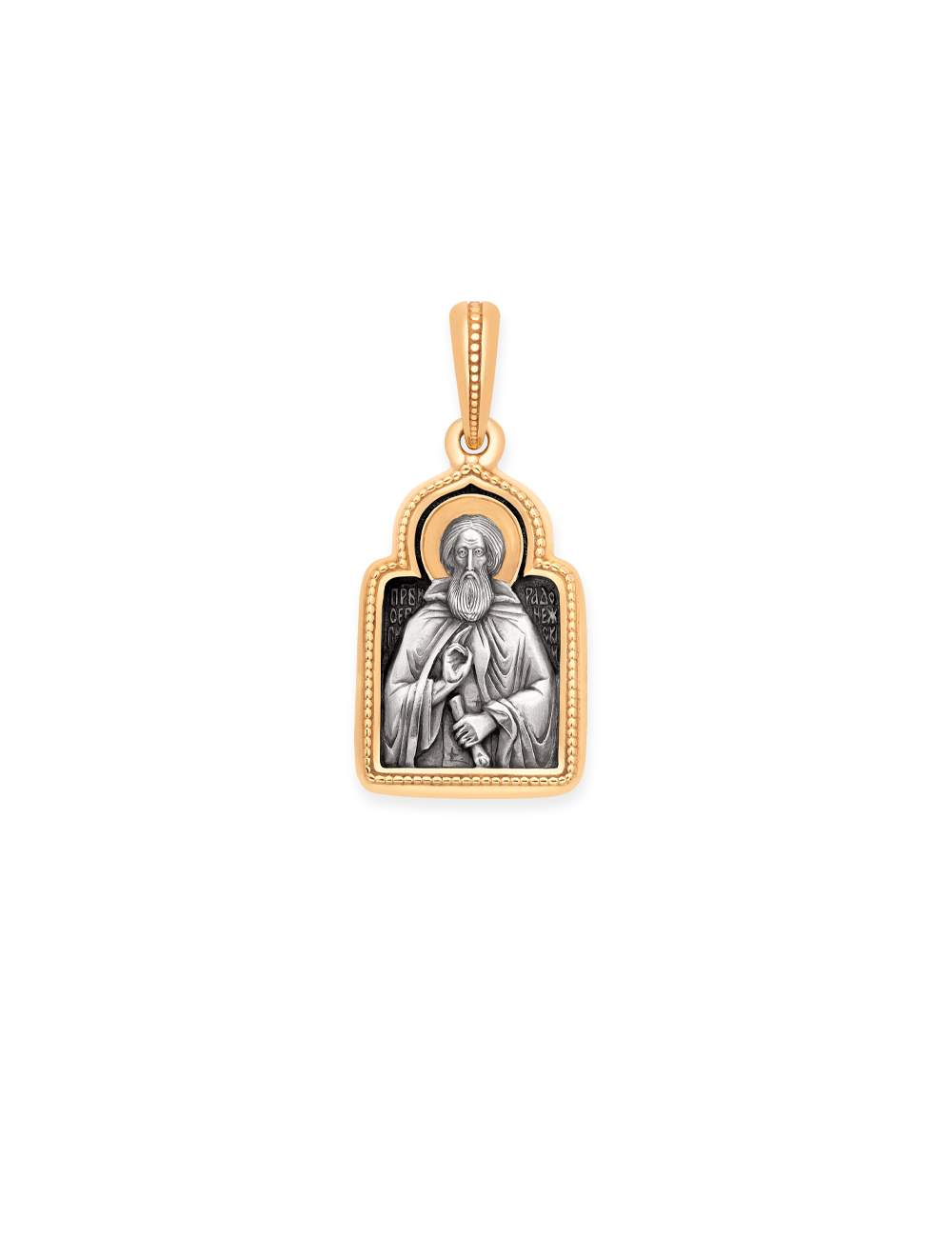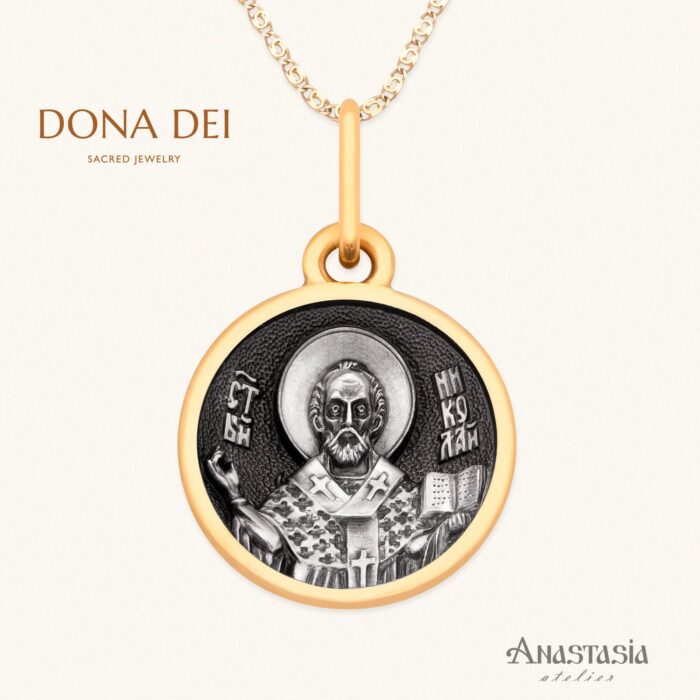Description
Size: 28×13 mm / 1.10×0.51 in Weight: ~4,6 g / ~0.14 oz Engraved Christian Orthodox Necklace Pendant SAINT SERGIUS RADONEZH This scapular is particularly relevant for a student, as St. Sergius of Radonezh is commonly asked for help with academic activities. However, it could also be a tasteful gift for anyone who wishes to have a ...portable icon of their patron saint. Due to its small size, the icon pendant "St. Sergius of Radonezh" is inconspicuous and convenient to wear. One can easily conceal it under one's clothes, or, alternatively, be worn in plain sight for a special occasion. The symbolism of the icon pendant "St. Sergius of Radonezh" The casing is a rectangle with rounded edges, topped with a cupola-like containing the saint's head. This shape is characteristic of the miniatures on the metal covers of 14th-15th century icons and Gospels. The front contains a waist-length image of the greatest Russian saint, St. Sergius of Radonezh. As is customary, he is shown in a monastic schema. He is holding a scroll in his left hand, while his right hand is folded in a gesture of two-digit blessing. The reverse depicts a stylized church framed in an ornament of climbing vines, the symbol of Christ and His fruit-bearing Church. Inscribed in the center is the prayer to the saint: "O Sergius, our father, pray to Christ our God that He may save our souls". The future saint and monk Sergius was born in 1314 in Rostov, in a pious family of boyars (Russian noblemen). At baptism, he was given the name Bartholomew. Even before his birth, the Divine Providence gave a sign that he would be a great servant of the Lord. From the first days of his life, the infant Bartholomew began a wondrous feat of abstinence. On Wednesdays and Fridays, he would refuse to suckle any milk from his mother's breast. Another miracle happened when he was an adolescent. Despite his diligence and tearful prayer, he found learning to read and write very difficult. One day, while walking through a field, the young Bartholomew met a mysterious elder monk in a black robe. He asked the monk to pray for him so that he might comprehend the letters. The old man prayed, blessed the boy, and said that he was destined to be the abode of the Holy Trinity. He said that Batholomew would bring many people to an understanding of God's commandments. Since then, Bartholomew became very adept at reading and writing. In addition, he began to exhibit the fruits of the Gospel from an early age. Shortly afterward Bartholomew's family, including his parents Cyril and Mary and his brothers Stephen and Peter, moved to Radonezh. There, the young Bartholomew continued the spiritual feat he had already begun, spending day and night in prayer and fasting. Shortly before their death, Batholomew's parents retired to a monastery. Batholomew left his property to his younger brother Peter and moved to the deep forest with his older brother Stephen. The brothers cut down some trees and built a cell and a small church, consecrated to the Holy Trinity. This was the beginning of the famous monastery of St. Sergius. Soon Stephen left his brother and moved to the Epiphany Monastery in Moscow. He was appointed prior and became a confessor to the grand prince. Bartholomew, who was given the monastic name Sergius, continued to live in the woods alone for about three years. Alone, he struggled with various temptations and with the hardships of life in the wilderness. His feat soon attracted up to 12 disciples who saw him as an example of a genuinely monastic life. In 1354, St. Sergius was ordained as a presbyter and abbot. Although appointed as a leader, St. Sergius did not abandon his habitual monastic labors. He lived a simple life and preferred to teach the brethren by example rather than by spoken word. To the end of his days, he remained an embodiment of meekness and humility. The life and works of St. Sergius occupy a particularly important place in the history of monasticism. By creating a monastery and monastic community outside the city, he laid the foundations for life in the great outdoors. Patriarch Philotheus of Constantinople sent St. Sergius his blessing, along with a letter approving the new system for establishing monastic communities. The numerous followers of St. Sergius carried his message of love and self-denial and his monastic experience to the furthest reaches of Russia. New monasteries began to be founded all over the country. St. Sergius was not only a teacher for monks but a spiritual foundation for the whole of Russia. No wonder he is referred to as the Abbot of All Russia. He was able to reconcile the Russian princes with each other. He also blessed Dmitry Donskoy to fight the Tatar Khan Mamai and even gave him two of his monks as soldiers. Even during his life, St. Sergius performed numerous miracles and was honored with great revelations. Once Our Lady appeared to him with the Apostles Peter and John and promised to protect and support his monastery. On another occasion, he saw an extraordinary light and a variety of different birds, whose harmonious singing filled the air. The vision came with the revelation that many monks would gather in his monastery in the future. The servant of God reposed in the Lord on 25 September (8 October) 1391, at age 77. 30 years after his burial the relics of the holy monk were revealed through a heavenly vision. Today, they remain an inexhaustible source of healing grace. For many centuries, Orthodox Christians have addressed their patron saint with prayers for their various needs. However, believers most commonly resort to his patronage when seeking help in gaining wisdom and the ability to learn. The saint is commemorated on 25 September (8 October) and 5 (18) July. Technical details of the icon pendant "St. Sergius of Radonezh" The scapular is made of grade-925 sterling silver and decorated with blackening. The cupola-shaped top part ends in a fixed ear with a hoop for threading a chain. The outer edges are covered with 24kt gold plating, as is the halo around the holy monk's head. A band of ornament resembling a chain or rope runs along the central part of the top hoop. The icon is quite small, with dimensions of 1.10×0.51 in (28×13 mm) and a weight of 0.14 oz (4.6 g). As a result, it can be easily concealed and worn discreetly under one's clothes. However, should one wish to do so, one can wear it in plain sight. In this case, the icon pendant will serve as a beautiful complement to one's festive clothes.













